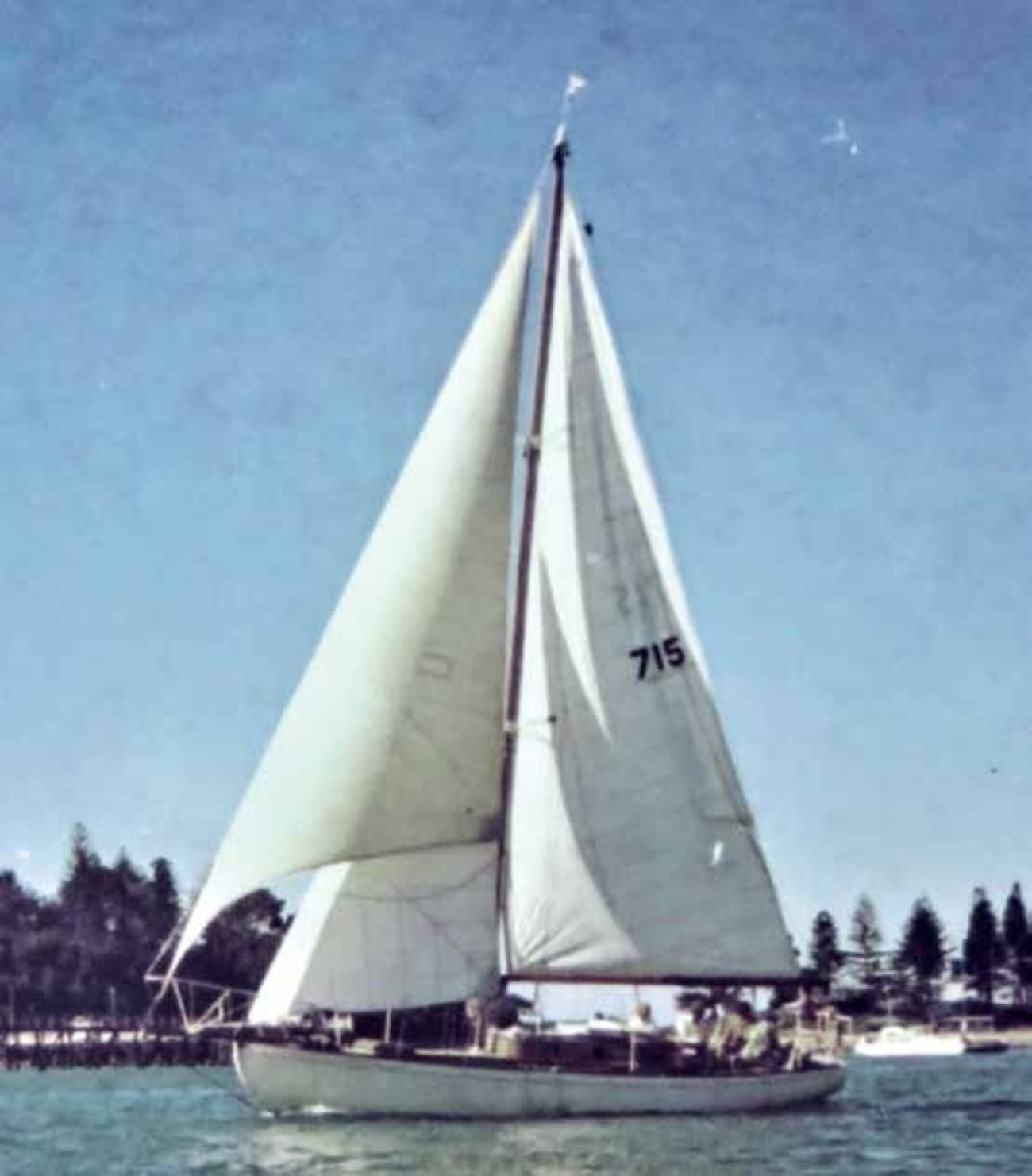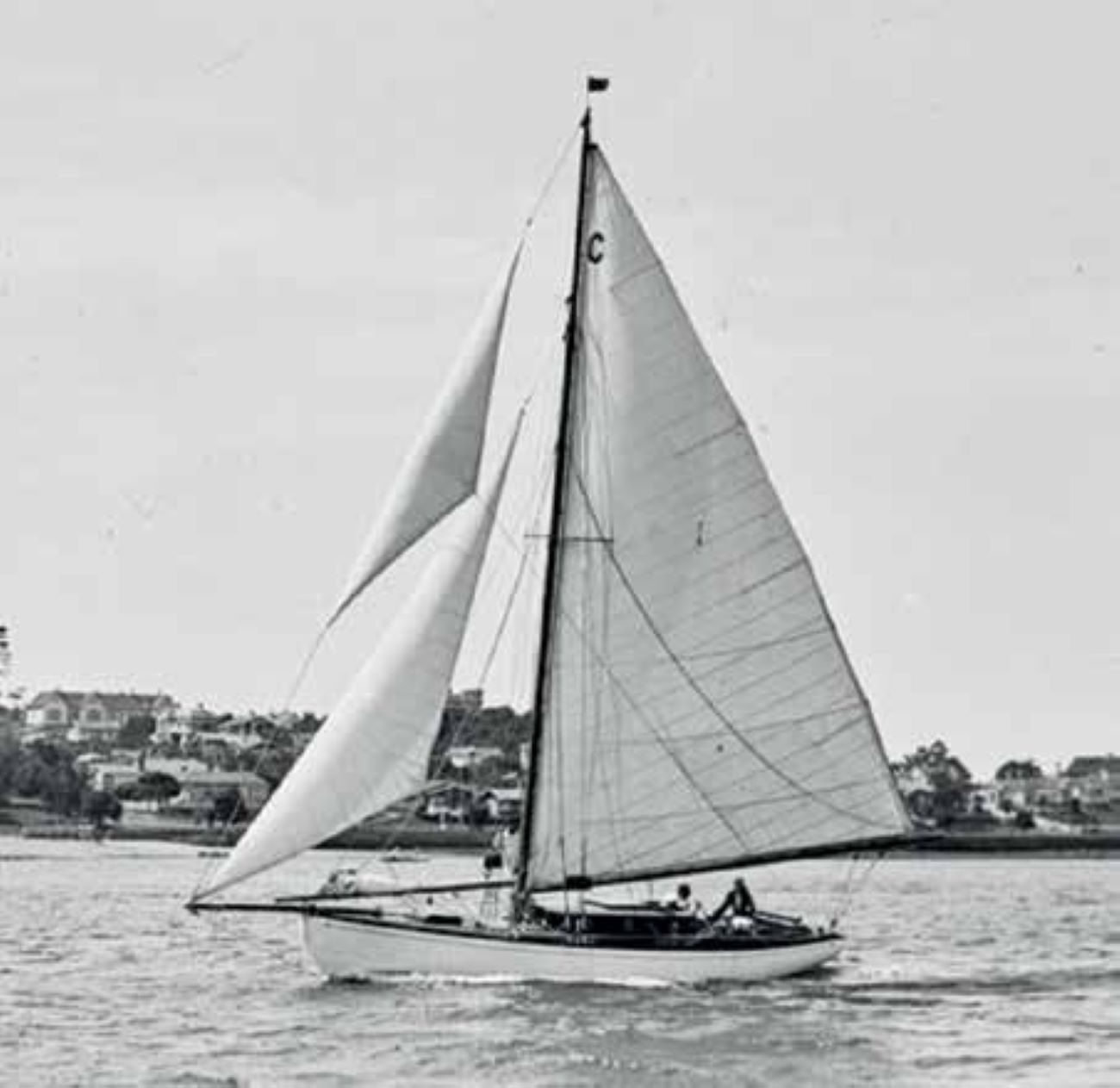

The horizon was a magnet as long as I can remember but like the gold at rainbow’s end, it was always just out of reach. For a few years I had lots of fun racing in the gulf and Northland coast in Andromeda, the 26ft Des Townsondesigned yacht my father (who died a year into the project) and I built in my late teen years, but the pull of the Pacific was hard to resist.
My first ocean voyage was from Fiji to Auckland in 1966, a rough trip that did not dampen enthusiasm, or perhaps I just forgot the bad bits. As a teenager I learned astro-navigation from a wonderful mentor that led to my teaching the subject for the next 30 years.
Karin and I first met in about 1968. Karin had plans for an OE and I talked about the idea of sailing to faraway places. So after introducing Karin to sailing, when we saw the ‘ideal’ ocean cruiser come on the market, we combined her savings with the proceeds from selling Andromeda, borrowed some dollars, and bought Vectis.
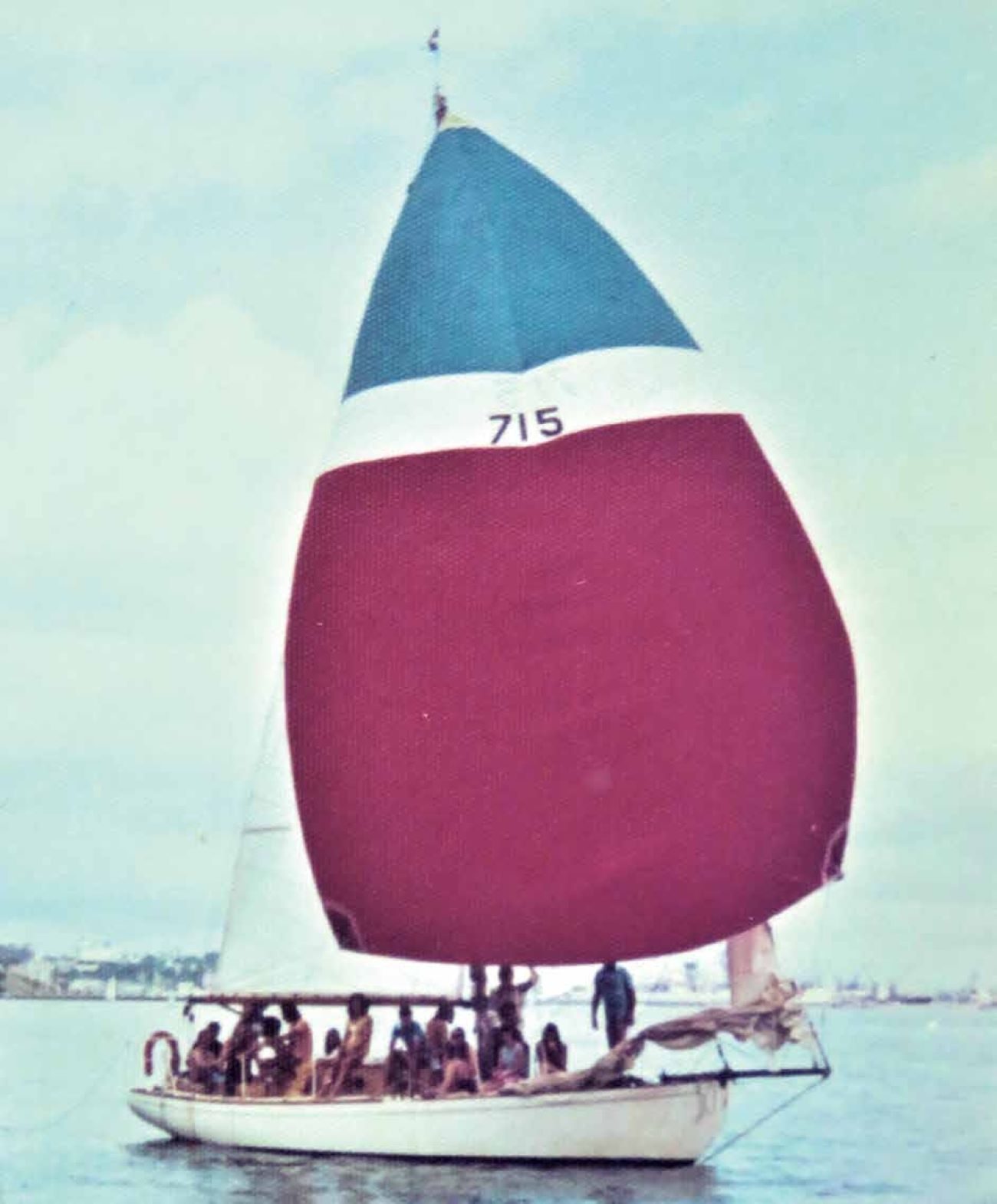
At 31ft (9.5m) plus bowsprit and 9ft 6in (2.9m) beam Vectis felt so big. Her seven tons was almost three times the displacement of Andromeda. She was planked with 1¼-inch kauri over bent ribs, with every fourth rib sawn pohutukawa. The deck was laid kauri; fore and aft over diagonals and caulked with cotton and tar. Coamings and bright work were mahogany, with oregon spars. She was built in 1929 and was one of the first Bert Woollacott keelers in New Zealand. While the Registration Certificate named Percy Vos, a well-known Auckland shipwright, as the builder, other sources credit her build to Woollacott. Unlike Bert Woollacott’s later designs, she had a spoon bow and a bit of a counter aft, and was masthead-cutter rigged.
We bought her in 1970 from Richard Didsbury, who had given away his cruising dreams. Vectis had often been in RNZYS ownership and previous owners included Alan Doull who was the Yacht Squadron manager for many years, and the Colebrook family. She had been to Suva in a race at some stage and therefore was a registered New Zealand ship. But several owners before us had let the ship register lapse, and some of them had died. The last official owner on the register was a well-known yachtsman, Bert Hammer (appropriately, he was an auctioneer). He was prepared to sign a bill of sale to allow us to re-register.
The survey showed some areas of decayed timber in the deck, coamings and carlin just forward of the cockpit. So after a season sailing, in 1972 we took her to my mother’s front lawn in Papatoetoe and started work.

The deck was cut away exposing more extensive decay than expected and we also decided that the Morris petrol engine would need to be replaced with diesel. The six-month plan finally blew out to over two years. Getting married just after the work began slowed progress a bit. To avoid the hull drying out excessively we put in a water system that dribbled down the outside of the hull under its plastic shed. The cockpit was wider than the cabin trunk, so it made sense to carry that width forward and incorporate a raised doghouse in the style of later Woollacott designs, giving more room below and some shelter at the forward end of the cockpit. We also added a small amount of headroom in the forward cabin, but left the original athwartships coaming in place just abaft the mast.
A year later work slowed a bit when our son John arrived, necessitating some more changes in the layout below. We planned a re-launching for a day in December 1974, but the truck did not arrive until next morning, much to Karin’s consternation, since the re-launch date then changed to Friday 13th
Preparations for heading offshore took lots of time. Getting a Category 1 Certificate required two inspectors and at the time there were only about seven items on the list. The inspector, Kerry Alexander, scratched his head a bit over the hardwood rudder stock. It had a diameter of about four inches and was part of the forward plank of the rudder.
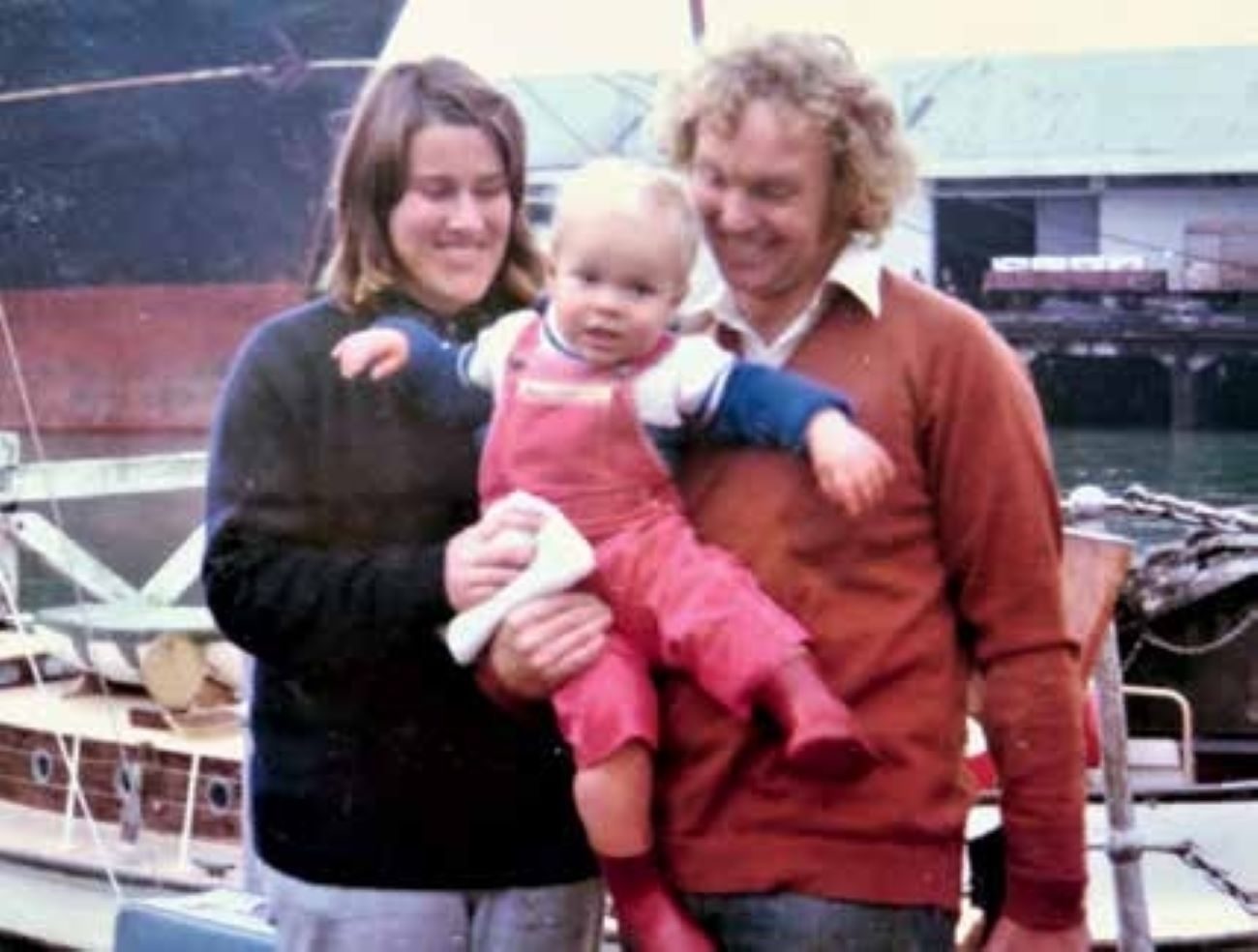
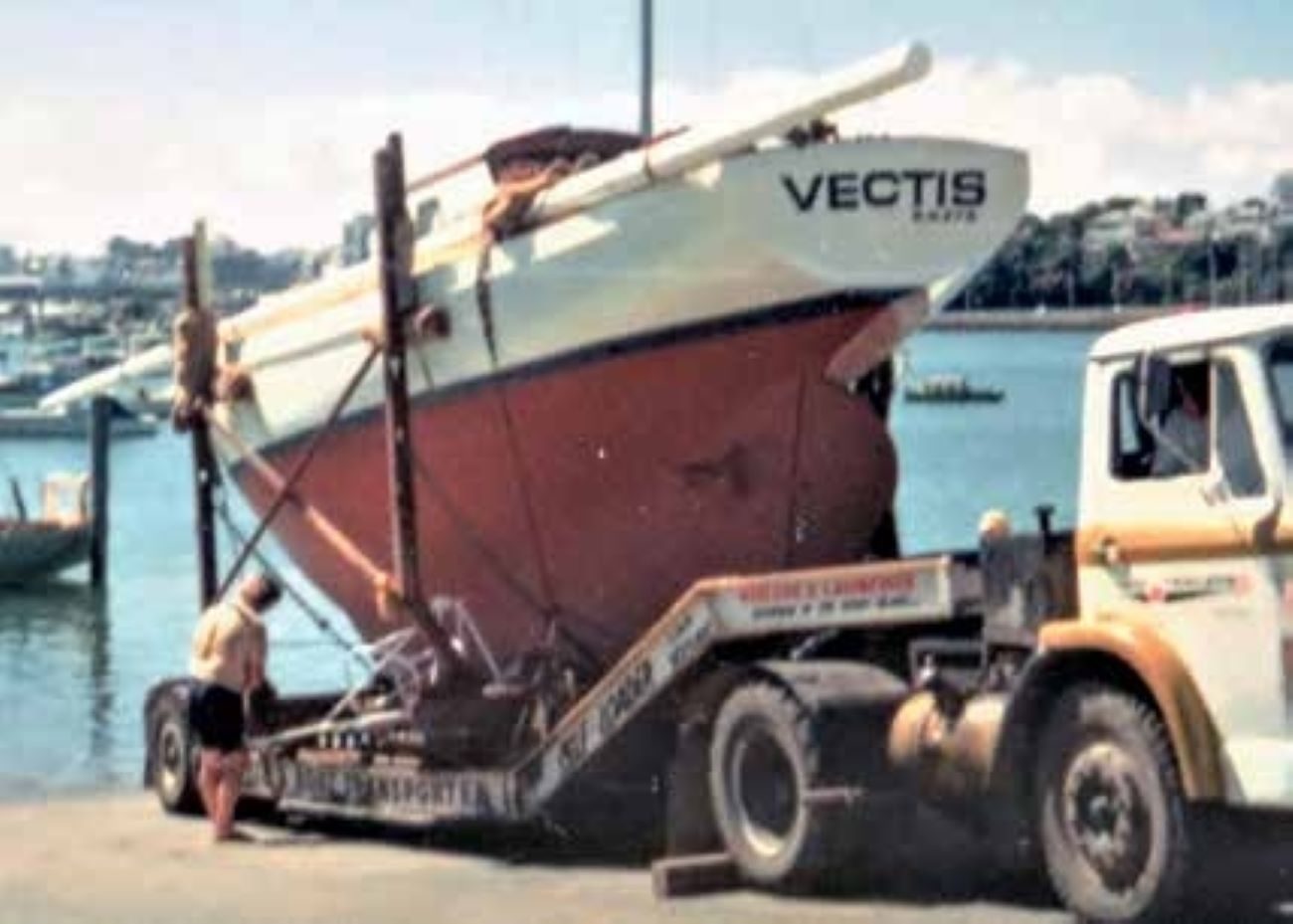
We cashed in cars and anything else we could find and set sail for the islands. A big crowd of family and friends gathered at Admiralty Steps to see Karin and me and our 16-month-old son on our way, guided by a wind vane and auxiliary rudder.
Initially we planned to head to Noumea, but the wind pushed us to a point where Suva was closer, so that’s where we went. Since I had been teaching navigation at night school for some years, I put up with the inevitable ribbing. I had spent several enjoyable days at the Royal Suva Yacht Club after the race in 1966. Some 50 years later, it has not changed at all.
We did not have much money and managed to get teaching jobs at a high school on Taveuni Island. They allowed us the free use of a small house ashore as well as having Vectis anchored inside the fringing reef.
We stayed in Fiji over the cyclone season and had to head off to anchor in shelter as a couple of minor hurricanes passed a few miles away. Then it was off to Vanuatu (called New Hebrides at that time) for some months, and on to New Caledonia. After 18 months away, we returned to Auckland and started planning the design and build of a new 50ft yacht.
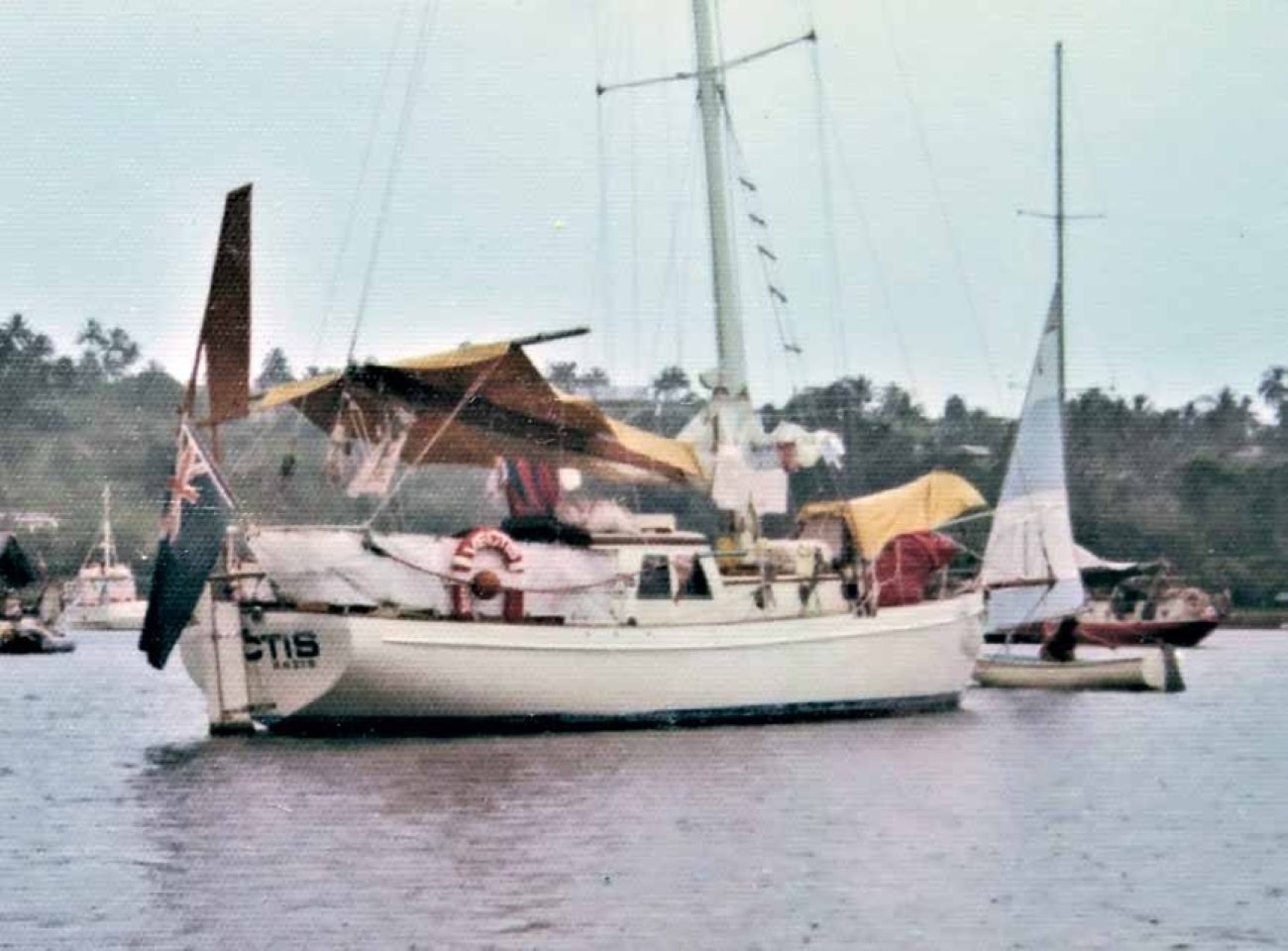

We sold Vectis to an Auckland couple, Les Smith and his wife. A few years later we heard she had been sold in San Francisco. In 1993 we were in San Francisco in our new yacht, Victoria and I was able to contact the owner of Vectis and provide some details about her. I saw some information online suggesting that aged swamp kauri timber was used in the hull construction. Only new heart kauri was used.
Simon Smith, who was tragically killed during the 2023 Coastal Classic, recalled happy times sailing on Vectis as a youngster. He introduced me to the current owner, Louis Nickles, who is delighted with Vectis. He purchased her in a rundown state and undertook a two-year restoration of the aft deck and cockpit, which he detailed by email. He described the hull as like new, in spite of the past 95 years. She now sails regularly on San Francisco Harbour.
Across the world there are many woodies built in New Zealand, mostly from that wonderful engineering product kauri. Augmented with red lead and held together with copper and bronze, properly maintained kauri yachts seem destined to last for centuries. BNZ
